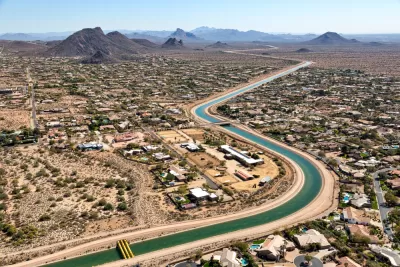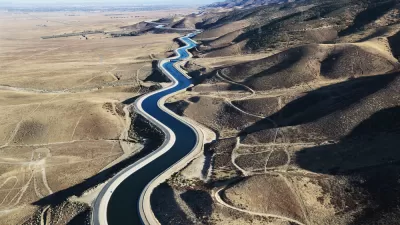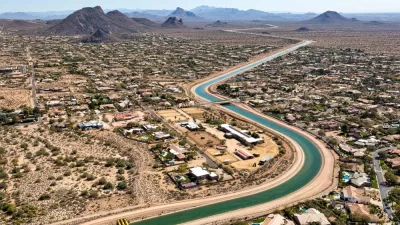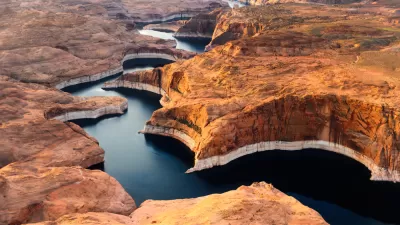The billion-dollar investment in the state's water supplies sounds good on paper, but lawmakers must also distribute funding effectively to mitigate the state's urgent water shortage.

An op-ed by Joanna Allhands argues that Arizona governor Doug Ducey's recent proposal to commit $1 billion to water projects won't be enough to solve the state's water woes. The governor's vague pledge, Allhands writes, leaves many unanswered questions about how the funds will be distributed.
Allhands also suggests that the governor's proposal doesn't bring enough attention to conservation, rather choosing to focus on projects that seek to augment water supplies. "If we only focus on finding new water, it leaves little incentive to use the water we have more wisely – something we could do quicker and, in most cases, at far lower cost."
According to Allhands, many of the more glamorous projects like desalination plants depend on other parties and are years away from completion. Meanwhile, the state could "raid" the general fund and deplete the water funding before it's allocated to specific projects.
Allhands cautions that lawmakers shouldn't forget about the policy side of things, even though those might be more difficult conversations. State leaders must tackle "not only how we sustain the uses that are already here, but also how we grow and where and (importantly) who pays for all of this."
Southwestern states are facing increasingly dire drought conditions. Last summer, when Lake Mead reached historic lows not seen since the reservoir's construction, the federal government declared a water shortage and implemented cutbacks for farmers and water agencies across the region.
FULL STORY: How many of Arizona's water woes would $1 billion solve? That's the question

Study: Maui’s Plan to Convert Vacation Rentals to Long-Term Housing Could Cause Nearly $1 Billion Economic Loss
The plan would reduce visitor accommodation by 25,% resulting in 1,900 jobs lost.

North Texas Transit Leaders Tout Benefits of TOD for Growing Region
At a summit focused on transit-oriented development, policymakers discussed how North Texas’ expanded light rail system can serve as a tool for economic growth.

Why Should We Subsidize Public Transportation?
Many public transit agencies face financial stress due to rising costs, declining fare revenue, and declining subsidies. Transit advocates must provide a strong business case for increasing public transit funding.

A Visual Celebration of Manhattan’s Chinatown Elder Community, Through Food
Lanterns, cafeteria trays, and community connection take center stage in this stunning photo essay.

How to Make US Trains Faster
Changes to boarding platforms and a switch to electric trains could improve U.S. passenger rail service without the added cost of high-speed rail.

Columbia’s Revitalized ‘Loop’ Is a Hub for Local Entrepreneurs
A focus on small businesses is helping a commercial corridor in Columbia, Missouri thrive.
Urban Design for Planners 1: Software Tools
This six-course series explores essential urban design concepts using open source software and equips planners with the tools they need to participate fully in the urban design process.
Planning for Universal Design
Learn the tools for implementing Universal Design in planning regulations.
City of Santa Clarita
Ascent Environmental
Institute for Housing and Urban Development Studies (IHS)
City of Grandview
Harvard GSD Executive Education
Toledo-Lucas County Plan Commissions
Salt Lake City
NYU Wagner Graduate School of Public Service





























